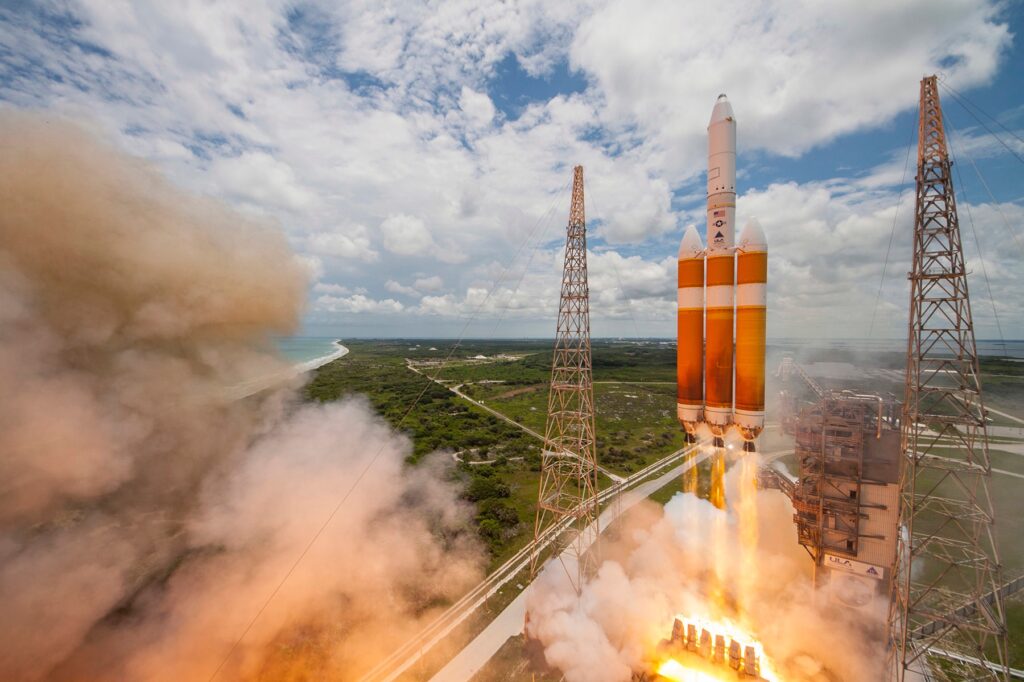Balancing Space Superiority and Space Services to Better Sustain the Joint Force

Speaking before Congress, Chief of Space Operations Gen. B. Chance Saltzman stated that the Space Force had two fundamental missions: “to provide essential services to the joint force and to protect the joint force from adversary hostile uses of space systems.” Recent work on space warfare primarily focuses on the latter goal, with publications available on counterspace weapons, space superiority in great power competition, and operational imperatives. But the first goal remains important as well. Members of the new U.S. Space Force service components assigned to terrestrial combatant commands are particularly well placed to go beyond just focusing on space superiority. To effectively increase joint force lethality, they should also find new ways to provide essential services to joint forces. As the first space service component of a terrestrial combatant command, Space Forces Indo-Pacific guardians should set a new operational standard for space. Given the Indo-Pacific theater’s unique challenges, the operational focus should shift toward a more balanced approach — space operations to sustain joint forces.
Unlike other servicemembers in components such as Pacific Air Forces, Pacific Fleet, or U.S. Army Pacific, Space Forces Indo-Pacific guardians cannot be solely focused on their associated domain. They have the added challenge of bridging two of the nation’s largest geographic combatant commands, Indo-Pacific Command and Space Command. If that is not hard enough, Space Forces Indo-Pacific guardians should also set a new operational standard for space operations, which have historically been isolated to the strategic level of warfare. In the words of General Saltzman, “This is an important step as we normalize Space into the joint force. Given today’s multi-domain character of war, Space should be deeply integrated with the joint team.” If they are to realize General Saltzman’s goals, Space Forces Indo-Pacific guardians cannot simply be good joint team players. They should be fundamentally joint focused.
Space Operations and Joint Sustainment
To be inherently joint focused and increase joint force lethality, guardians should re-energize an operational connection that the joint force has taken for granted — space operations and joint sustainment. Currently, only one paragraph of Joint Publication 3-14, Space Operations, discusses space operations and joint sustainment. It reads:
[Positioning, navigation, and timing], [intelligence, surveillance, and reconnaissance], [satellite communication], and environmental monitoring support joint sustainment. Space-based environmental monitoring information provides regional weather, sea states, and terrain and ground stability and supports delivery of supplies and personnel. [Satellite communication] supports logistics and communications networks and links supporting the [common operating picture]. Space-based intelligence collection and environmental monitoring provide information for logistics route planning, timing, delivery methods, and locations. Space-based [global navigation satellite systems] … provide [positioning, navigation, and timing] to civil and military users worldwide.
The Space Force, although just over three years old, also has a lot of room for improvement in this area. Although enabling joint lethality and effectiveness is cited as a cornerstone responsibility, much space doctrine focuses on space operations to achieve space superiority. Seeking space superiority remains vital, of course; however, focusing only on this goal risks squandering the advantage it achieves. Ineffectively using U.S. space-based capabilities would be a dangerous missed opportunity for the joint force. In this regard, Russia’s missteps in utilizing its apparent space-based intelligence and precision navigation advantages in its recent war with Ukraine is a cautionary tale.
Only a handful of publicly available articles hint at the need to develop better procedures to effectively prioritize essential space-based services in a conflict. One 2018 National Defense University paper notes that “in recent exercises, white cell teams quickly restored denied space services and capabilities to allow progress in order to meet training objectives.” The claim was based on direct observations of tier 1 military exercises since 2011. Given this paucity of research and preparation, it is likely that in a crisis scenario where satellites are degraded, space forces will not have had sufficient practice in prioritizing and providing limited space services to relevant joint task forces. Fortunately, the creation of space components, like Space Forces Indo-Pacific, is a step in the right direction. Through the new space component staff, dedicated warfighters can now better prepare for denied space services scenarios. But they can only do so if there is a balanced effort incorporating both the pursuit of space superiority and the provision of essential space-based services.
High Demand, Low Density
To sustain joint forces requires space operations to maintain space superiority and to deliver space-based services to priority forces at the right time. The latter is made more critical because of the high-demand, low-density nature of space capabilities. In other words, there is not enough capability for everyone. Furthermore, an ever-increasing demand for exquisite capabilities like high-fidelity satellite imagery and over-the-horizon encrypted communications places even more strain on aging space systems. To make matters worse, developing counterspace threats like ground-based lasers and antisatellite missiles threaten the availability of critical space systems in crisis or conflict. Thus, guardians will be expected to anticipate needs and practice command and control processes to make the best use of surviving space-based services.
The dual focus on space operations and joint force enhancement can distinguish space components like Space Forces Indo-Pacific from Space Command, the geographic combatant command for the space domain. While Space Command members can primarily focus on space superiority operations, Space Forces Indo-Pacific guardians can ensure that space operations provide the required terrestrial effect.
To achieve synchronized terrestrial and space operations, Space Forces Indo-Pacific guardians should learn to anticipate joint force movement and maneuvers. The ability to anticipate is made more critical by the growing capabilities of U.S. adversaries. Moreover, in a conflict with potentially degraded communications across a vast ocean, the ability to anticipate and provide ready space-based services to the right task forces can significantly influence the outcome. To be effective, Space Forces Indo-Pacific guardians should understand, arguably in greater detail than other joint services, the joint force commander’s intent and the entire joint operations plan. Moreover, guardians should be able to anticipate several action-reaction possibilities as the conflict progresses and provide responsive sustainment support from space systems. In practice, this involves influencing space operations so that the most critical space services are preserved.
At the same time, guardians should coordinate the provision of key space services to prioritized forces, even ahead of any space support request. Acquiring such a high level of proactive planning begins with establishing a culture of historical study and early joint education, training, and experience.
One of the best historical studies for Space Forces Indo-Pacific guardians is the 1982 Falklands War, which featured vast ocean distances, limited areas for operational support, multidomain battles, and the use of space-based services. Much of the information detailing space capabilities used during the Falklands War remains in classified vaults. However, the data that historians have so far uncovered demonstrate the impact of space-based support. Notably, historians have even uncovered hints of the Soviet Union providing space-based intelligence to Argentina during the conflict. This means the Falklands was an earlier example of the “first space war,” a term typically associated with Desert Storm.
No single historical event can speak to all modern operational challenges. The value is in the questions that stimulate reflection. For example, how did British forces mitigate the impacts of long distances during their Falkland campaign? How were multidomain operations executed, and to what effect? The more historical study becomes embedded in guardian culture, the more adept they will be at anticipating probable outcomes.
Early Joint Education, Training, and Experience
Beyond historical studies, the Space Force should also rethink the education, training, and experiences of its guardians. A key step is to better incorporate relevant studies in the arts into educational qualifications. The Space Force should also build in earlier joint education and training programs that equip guardians to better understand land, sea, and air operations. One option is for guardians to attend a sister service primary school, like how select guardians attend sister service intermediate-level education. Another is to train and qualify guardians as joint operations planners.
Of course, there is no better substitute for experience. Therefore, the Space Force should seek to integrate guardians into the operational level echelons of its sister services, like the Army’s multidomain task forces, the Navy’s fleet staffs, or the Air Force’s air operations centers. In so doing, a space component staff trains creative, innovative, and logical problem-solvers who can employ operational art to achieve unified action with joint forces.
As the first space component assigned to a terrestrial combatant command, Space Forces Indo-Pacific guardians are uniquely postured to set a new operational standard for space. While most theorists and scholars will focus on potential engagements in the space domain, Space Forces Indo-Pacific guardians should not lose sight of how space-based services are provided to joint forces. By establishing a culture of historical study and rethinking education, training, and experiences, they can be better equipped to work with joint partners, anticipate future support needs, and provide the right space-based services to the right forces at the right time.
Dennis Rice is a Space Force officer who has led operations in multiple domains during his assignments with Space Forces Indo-Pacific, Pacific Air Forces, Cyber Command, National Security Agency, and Seventh Fleet. He earned a B.S. from the University of California San Diego and an M.S. from National Intelligence University, and was an Academic Year 2023 Art of War Scholar at the U.S. Army Command and General Staff College.
The views expressed are those of the author and do not reflect the official policy or position of the Department of Defense.
Image: Courtesy photo by ULA


